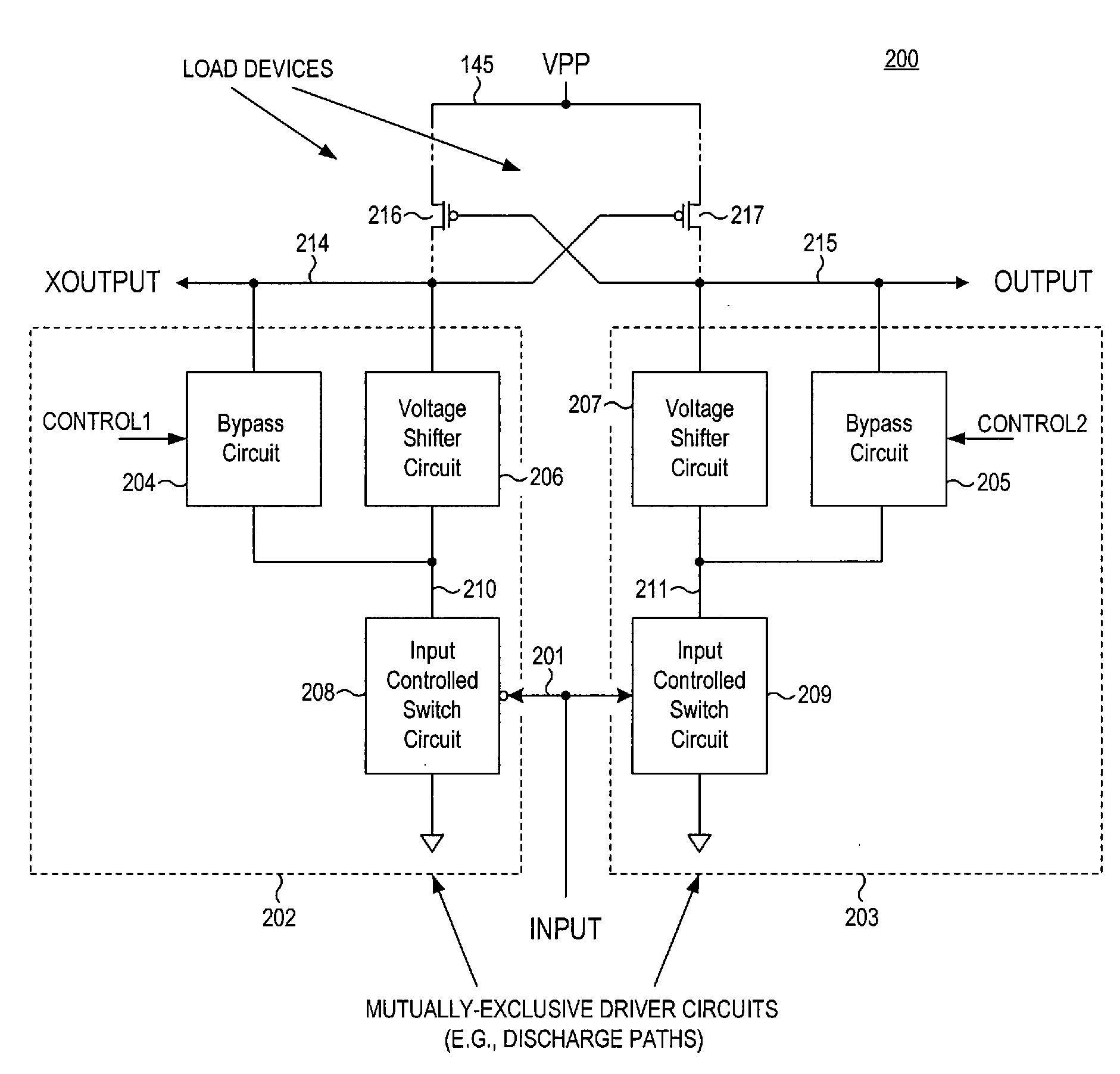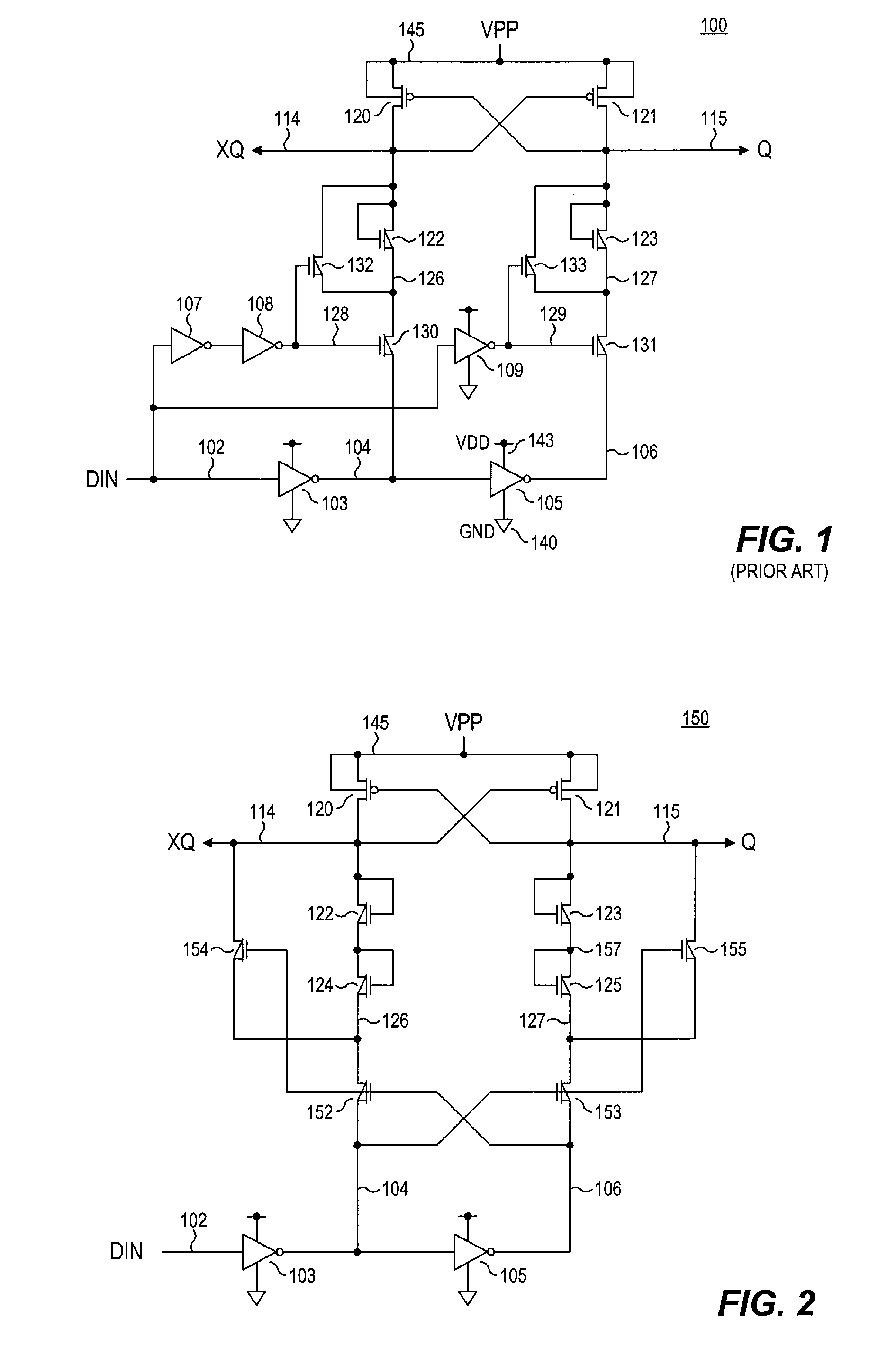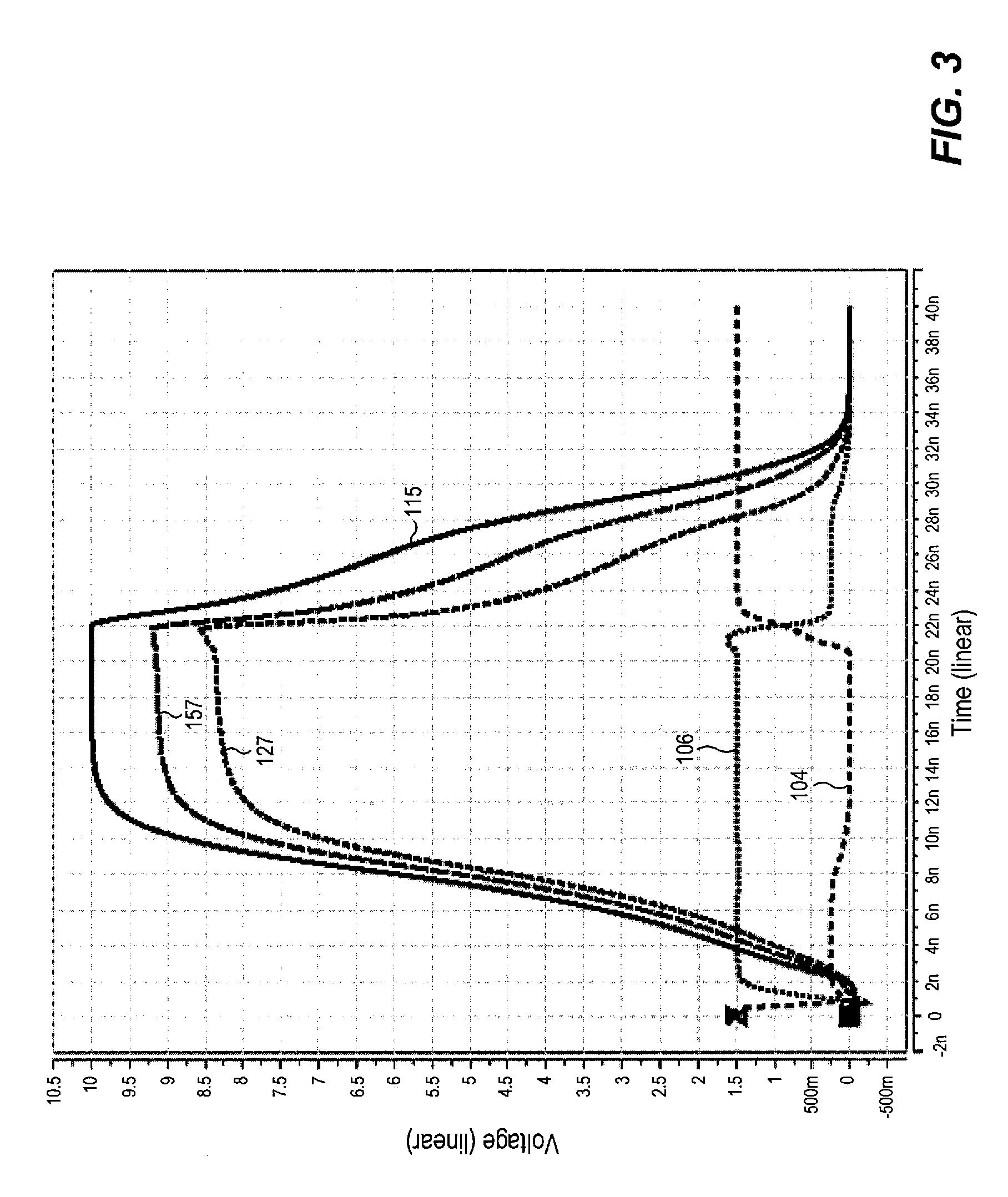Method for incorporating transistor snap-back protection in a level shifter circuit
a level shifter circuit and transistor technology, applied in logic circuits, pulse automatic control, pulse techniques, etc., can solve the problems of significant reliability concerns, limiting the operating voltage achievable, and the problem of more problems with snapping back problems in nmos devices than in pmos devices
- Summary
- Abstract
- Description
- Claims
- Application Information
AI Technical Summary
Benefits of technology
Problems solved by technology
Method used
Image
Examples
Embodiment Construction
)
[0031]Referring now to FIG. 2, a level shifting circuit is shown that does not require intentionally weakened pull down paths, and yet is protected from snapback effects independent of output load. As before, a logic signal DIN is conveyed on node 102, and is inverted by low-voltage inverter 103 to generate the VDD-level control signal on node 104, which is inverted by low-voltage inverter 105 to generate the VDD-level control signal on node 106. The inverters 103, 105 may be viewed as belonging to the VDD voltage domain (i.e., the low voltage domain), and the input signal DIN conveyed on node 102 and the control signals conveyed on nodes 104, 106 may be viewed as VDD domain (i.e., low-voltage domain) signals having high and low levels respectively corresponding to VDD and ground.
[0032]The complementary XQ, Q output nodes 114, 115 are coupled to VPP by cross-coupled PMOS transistors 120, 121, and are coupled to ground by generally matching discharge circuits. The XQ output node 114...
PUM
 Login to View More
Login to View More Abstract
Description
Claims
Application Information
 Login to View More
Login to View More - R&D
- Intellectual Property
- Life Sciences
- Materials
- Tech Scout
- Unparalleled Data Quality
- Higher Quality Content
- 60% Fewer Hallucinations
Browse by: Latest US Patents, China's latest patents, Technical Efficacy Thesaurus, Application Domain, Technology Topic, Popular Technical Reports.
© 2025 PatSnap. All rights reserved.Legal|Privacy policy|Modern Slavery Act Transparency Statement|Sitemap|About US| Contact US: help@patsnap.com



